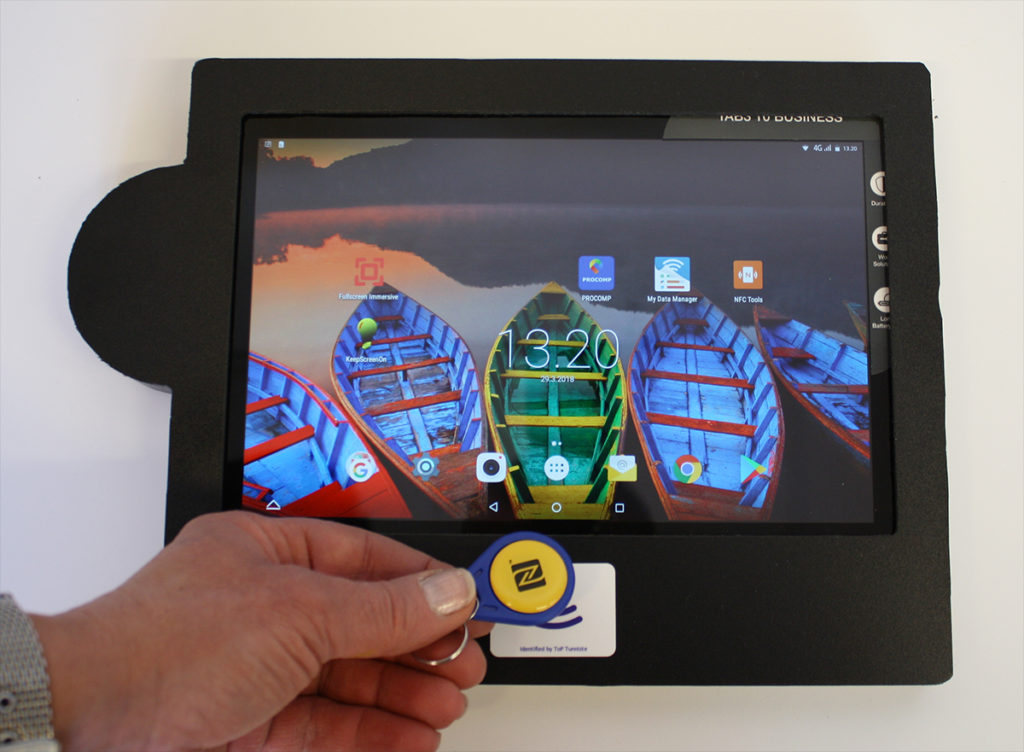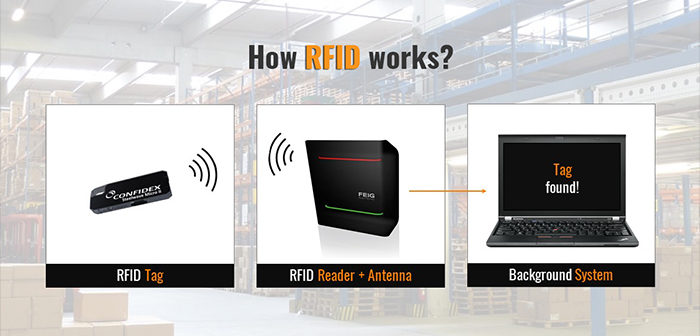RFID technology is often mentioned when process optimization is needed in production or logistics. The term is not widely known, although many of us use RFID nowadays in everyday life, e.g. with our mobile devices. What does RFID technology exactly mean then?
RFID i.e. Radio Frequency Identification is a general term for techniques operating on radio frequencies. Radio frequencies are used when transferring data between radio and satellite transmitters or navigation devices. Examples of some radio transmitters: mobile phones, wireless mouse and keyboard, WLAN base station, Bluetooth, radio phone, wireless thermometer, wireless headsets, TV, radar for opening or monitoring doors and radio devices for aviation and navigation.
“Radio frequencies moving forward with a speed of light are a natural resource, which is not decreasing in use”, tells Finnish Transport and Communication Agency. The use of radio frequencies is specified according to international standards.
How identification works on radio frequencies?
RFID is an automatic identification and data capture technology which enables data transfer between two separate objects: a tag and a reader, which are designed to be interacting with each other on certain radio frequency.
- 1. A tag
- An identifier or a tag, which is attached to an object, is chosen based on the purpose and target requirements. RFID tag always includes a chip, an antenna and some memory. A tag can be attached to product in manufacturing or it can be attached to chosen object later. Typically a tag is an adhesive label or a hard tag, which is attached to target with screws. Identifier can also be included in e.g. in RFID cards and key fobs. A tag is readable in different frequencies depending on a distance. This sets requirements for selection of suitable tags and readers.
- 2. A reader
- A RFID tag is readable with different readers or mobile devices, depending on a distance. A reader can be a handheld mobile device or an automatic device, which is placed in the fixed location, such as at entrance gates. Automatic readers can identify even hundreds of tags passing a fixed reader spot. If a reader does not have integrated antenna, they will be installed to separate antenna gates.
Some major benefits of RFID technology compared to other automatic identification techniques are quick and secure readability within long distances. Also, a large amount of data can be stored to tags.
Where is RFID used?
RFID technology can be capitalized when identifying, monitoring, tracking and individualizing products or assets. The data captured from the chosen object is transmitted to software application. The application helps in processing data, presenting it in useful form and forwarding data to other information systems.
Many of us have unknowingly used RFID technology, e.g. in mobile payments. This requires NFC (Near Field Communication is a short distance wireless technology, which uses RFID technique) feature in mobile phone. Two devices using NFC, form a wireless connection when placed in contact distance with each other. The other device (mobile device or payment terminal) is operating as a reader and the other as an identifier (NFC tag or device).

RFID technology has already been utilized in access control, travel and payment cards for long. RFID is increasingly used in identifying and managing items across IoT networks. People and devices communicate with each other and user experience expands from physical to digital. This strengthens consumer’s interaction with products and helps in generating new services.
RFID technology is frequently in use when enhancing processes in manufacturing and service industries. It helps in:
- • Monitoring production and managing supply chain as well as improving the production lead time
• Optimization, quality control, planning of workflow and ensuring material availability in production processes
• Monitoring product flow in logistics and automatizing order and delivery operations
Automated data capture speeds up and facilitates operations, decreases manual errors and enables relocating resources from manual work to more productive operations. RFID technology can be capitalized by many industries. The amount of applications will increase when the technology develops further. RFID offers better knowledge, which helps in making better decisions. Right decisions will lead to better results and outcome.
**
Interested in finding out how to enhance your business with RFID technology? Contact CEO Jussi-Pekka Koskinen +358 10 841 0339 or jp.koskinen (at) toptunniste.fi.



